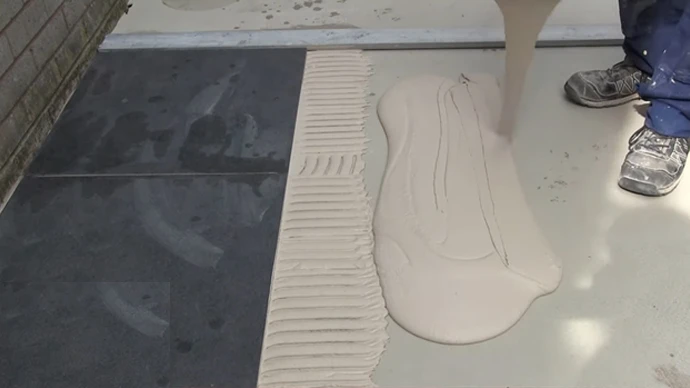Both commercial and industrial buildings benefit from sealed concrete flooring’s durability and simplicity of maintenance. Unlike other types of flooring, sealed concrete is resistant to spills, stains, and scratches. But if you’re considering installing tile on top of a sealed concrete floor, can you lay the tile on a sealed concrete floor?
Although tile can be installed directly over sealed concrete using mortar or any well-suited tile adhesive, this is not recommended since the sealant prevents the glue from adhering correctly and may lose adhesion over time.
But there are some popular ways to lay ceramic or cement tile on the sealed concrete floor for a more permanent installation. The following post will discuss various methods for laying tile on a sealed concrete floor, so continue reading.
How Can You Lay Tile on a Sealed Concrete Floor?
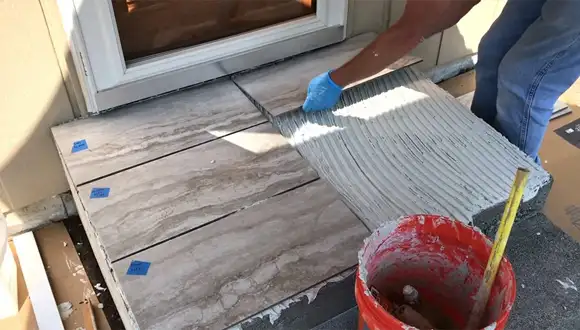
If you don’t want to take the hassle of removing the old flooring, you can follow others’ ways and lay the tile right on top of the sealed concrete floor. Here are a few methodologies you can follow:
Method 1: Using an Underlayment
One of the most common methods for installing tile on a sealed concrete floor is to use an underlayment (such as Backer cement board or Exterior-grade plywood) to protect the tile and ensure a long-lasting, level surface.
Cement board underlayments are made of cement, fiberglass, and water. It is typically used as an underlayment for tile, but it can also be used as a stand-alone flooring material.
Underlayment Pros:
- Extremely durable
- Easy to install
- Provides smooth, level surface
Underlayment Cons:
- More expensive than options
To install underlayment on a sealed concrete floor, you must first remove any existing mats and furniture from the surface of the concrete. Once the obstacles are removed, you will need to clean the surface of the concrete with warm water and then dry it thoroughly.
After cleaning and drying the surface of the concrete, spread a layer of thinset mortar to its surface using a notched trowel. After spreading the thin set, you need to lay the underlayment on top of it and secure it with concrete screws.
After the underlayment is secure, you will need to apply another layer of thin-set over the underlayment board and lay your tile on top of the thin-set. Once the ceramic tile is in place, you can grout the joints and allow the grout to dry completely.
Method 2: Using a Self-Leveling Compound
Another popular method of installing tiles on sealed concrete floors is with a self-leveling compound. A self-leveling compound is a type of underlayment made from cement and water. It is designed to level out imperfections in the surface of a floor and provide a smooth, level surface for installing tile.
Self-Leveling Compound Pros:
- Easy to mix compound
- Less expensive
- Provides level surface
Self-Leveling Compound Cons:
- Not so durable
- Difficult to work with
- Can be messy
To install a self-leveling compound on a sealed concrete floor, remove any furniture and mats currently on the surface. The concrete base should be cleaned with clean water after the obstacles have been removed and allowed to completely dry.
Once the surface of the concrete is clean and dry, you will need to mix the self-leveling compound according to the manufacturer’s instructions. Once the compound is mixed, you must pour it on the concrete surface and use a trowel to spread it out evenly.
After the self-leveling compound is in place, you can place the tiles on top of the compound and let the compound dry. Then grout the joints and let them dry for at least 24 hours.
Method 3: Use a Floating Floor System
If you want to install a tile floor over sealed concrete, you can use a floating floor system. As the name suggests, floating floors refer to flooring materials that lock together similarly to puzzle pieces, creating a tight bond between them.
Due to the intimate bond between the tile and concrete, the tile is stable without any attachment to the floor.
Floating Floor System Pros:
- No need to remove old flooring
- Quick and easy to install
- Radiant heating compatible
Floating Floor System Cons:
- Not so stable and durable
- Multiple adhesives may be needed
To install a floating floor system, you will need to measure the area where you want to install the tile. Once you have the measurements, you must cut the tile to fit the space. You will also need a tile adhesive to secure the tile to the floor. After the tile is positioned, you must grout the joints between the tiles.
If you are installing a floating floor system over a sealed concrete floor, you will need to take extra care to ensure that the tile is secure. You may need to use more than one type of adhesive, and you may need to apply pressure to the tile to ensure that it bonds properly with the floor.
These methods are popular ways to install tile on a sealed concrete floor. But, each method has its pros and cons that you must consider before choosing the best strategy for your project. Regardless, there are a few things to keep in mind when installing tile on coated concrete:
- The surface of the concrete must be completely smooth, or the tiles will not sit evenly.
- It’s essential to use high-quality mortar and grout to secure the tiles.
- Sealed concrete floors are typically much harder than unsealed ones, so extra care must be taken to avoid chipping or cracking the tiles.
Considering these concerns, you can successfully tile over a sealed concrete floor.
What Material Should You Use for Tiling On a Sealed Concrete Floor?
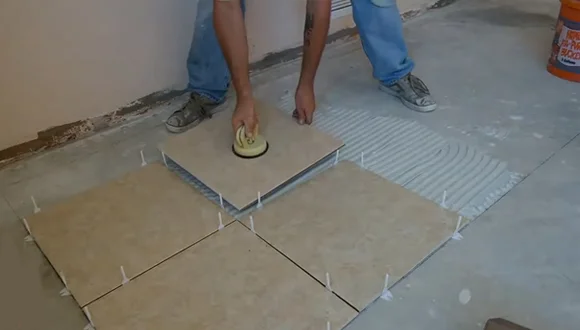
Sealed concrete floors are a popular choice for many homeowners, as they are easy to clean and maintain. When it comes time to lay new tiles, some special considerations must be made. You have a few adhesive options when laying tile on a concrete floor.
You can use a mortar bed. This involves spreading a layer of mortar over the concrete, then set the tile into the wet mortar. Mortar beds are ideal for uneven floors or large cracks, as they provide a level surface for the tile.
For best results, use an epoxy-based adhesive explicitly designed for use on concrete. These adhesives are available in liquid and powder form and can be either water- or solvent-based.
When using an adhesive, selecting one specifically designed for use on sealed concrete is essential. Otherwise, you run the risk of damaging the sealant.
By ensuring your surface is adequately prepared, you can achieve a professional-looking result that will last a long time.
Should You Remove Any Seal on Concrete Floor Before Laying Tile?
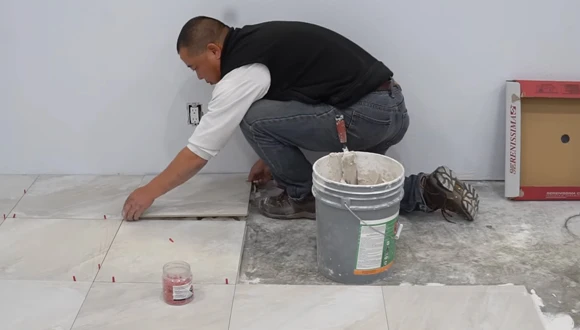
Before laying ceramic tile on a concrete floor, you must ensure that the surface is prepared correctly. One potential hindrance is a concrete sealer applied to the concrete.
Regarding concrete floors, there are a few schools of thought on whether or not you should remove any seal before laying the tile.
Sealers are designed to protect concrete from stains, water, and other damage and can be either explicit or colored. While sealers can be beneficial, they can make it difficult for tile to adhere to the surface of the concrete.
The sealer prevents the tile adhesive from entering the crevices of the concrete, ensuring a less secure connection between the tile and the concrete. Remove the sealer before applying tile mastic or thin-set to improve adhesion.
For this reason, it is generally recommended that any sealer be removed before laying the tile directly on the concrete. But removing the sealer from concrete can be a hassle and time-consuming task. So you can follow other easy methods to lay tile on sealed concrete floors.
Is Underlayment Necessary for Laying Tile On Sealed Concrete?
Underlayment is one of the most crucial aspects when installing tiles onto sealed concrete floors. Underlayment is a material laid over the subfloor before the tile is installed. It can provide additional support and stability, help to level out imperfections, and act as a moisture barrier.
While underlayment is not always necessary, it can be a good idea to use it when tiling over sealed concrete. Sealed concrete is less likely to suffer from moisture damage, but it can still be uneven in places. An underlayment can help to create a smooth surface for the tile and reduce the risk of cracks or chips.
Does Mortar Stick to Sealant Concrete Floor for Laying Tile?
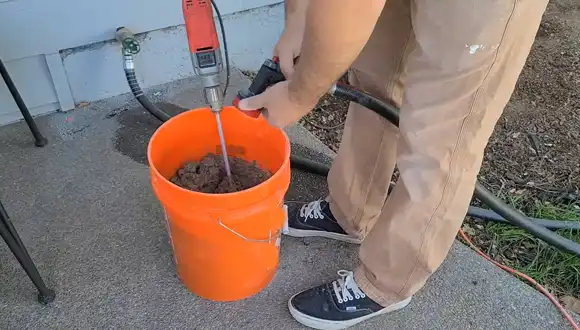
Laying tile over a sealed concrete floor is generally a straightforward process. A good penetrating sealer will provide a smooth, hard surface that is easy to clean and maintain. It will also prevent moisture from seeping into the concrete, which can cause the tile to loosen or crack over time.
Once the concrete is sealed, you can apply a mortar bed and lay your ceramic tile. Remember that using an elastomeric, crack-prevention membrane is best to seal and bond the mortar bed to the concrete. This will help to prevent any problems down the road.
Is it a Good Idea to Tiling over a Sealed Concrete Floor?
Any sealing surface helps to protect against staining and water damage and can make the floor easier to clean. Also, sealed concrete floors have a more finished look than unsealed ones. But, laying tiles over a sealed concrete surface can present some challenges.
If you’re considering tiling over a polished concrete floor, follow one of the methods mentioned above for the best results. Proper preparation is key to ensuring that your tile adheres correctly. With proper care and attention to detail, you can tile over sealed concrete and enjoy the beauty and durability of your new floors.
Topics of Discussion:
- What causes the concrete garage roof to leak?
- How Long Do Sealants Last on Metal and Concrete?
- What is the proper way to seal around crawlway vents in concrete walkways?
- How Often Should You Power Wash Your Sealed Concrete?
- Does Flex Seal work on wet concrete?
